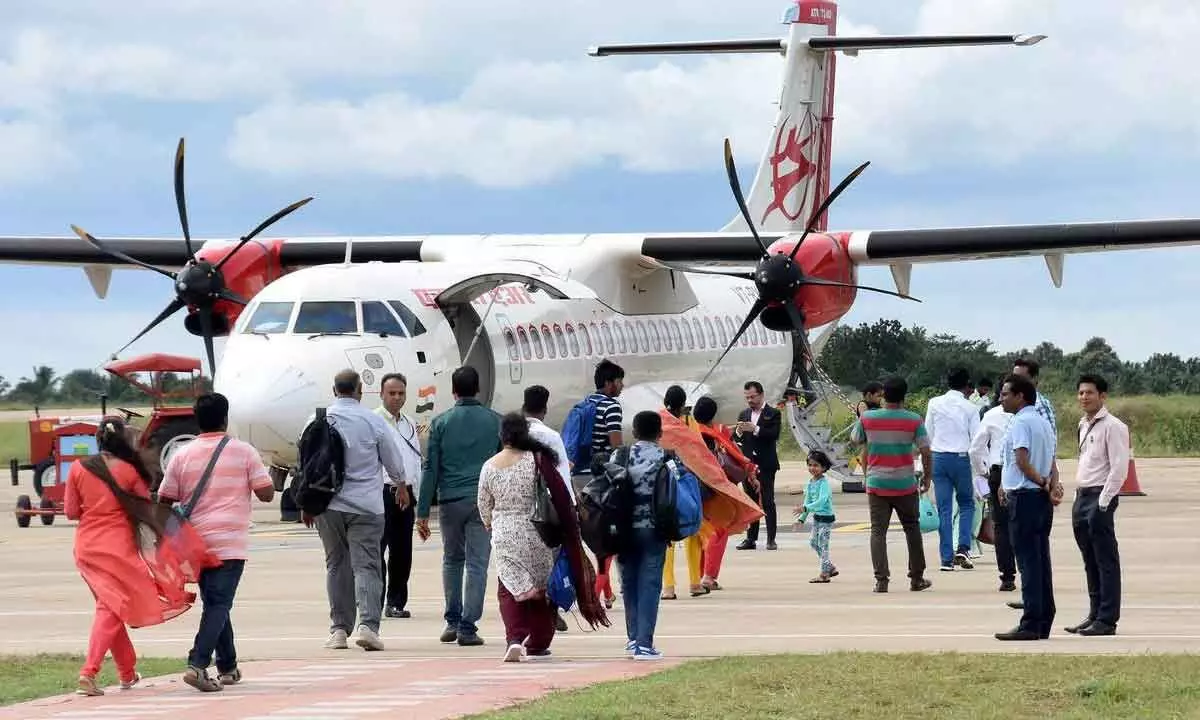Airlines see strong passenger demand in June
International RPKs grew by 229.5% YoY and domestic RPKs increased by 5.2% YoY. Domestic traffic levels are now 18.6% below their pre-pandemic 2019 levels
image for illustrative purpose

Global air passenger demand continued its strong recovery, with revenue passenger kilometres (RPKs) rising by 76.2 per cent in year-on-year (YoY) terms in June.
International RPKs grew by 229.5 per cent YoY and domestic RPKs increased by 5.2 per cent YoY. Domestic traffic levels are now 18.6 per cent below their pre-pandemic 2019 levels.
The industry-wide passenger load factor was 82.4 per cent in June, up 12.9 percentage points (pp) over the past year and returning to above 80 per cent for the first time since January 2020.
Looking ahead, the re-opening of the Asia Pacific markets will provide renewed impetus to the global passenger recovery while inflation and higher interest rates may eventually begin to dampen the pent-up demand for air travel.
There are no positional changes among the top twenty country markets; the United States remains in pole position and China in second place, a long way away from third-placed India. Collectively the US and China account for over 35 per cent of all capacity this week a slight increase on their 33 per cent combined share in 2019. The top twenty countries now account for 76 per cent of all seats, in 2019 that was 73 per cent and although these are subtle differences the concentration of capacity in across the top country markets highlights their power both between each other and also towards smaller regional markets.
The continued growth of low-cost airline capacity is impressive when compared to their 2019 positions. Ryanair, WizzAir, Indigo, and Southwest Airlines all now offer more capacity than pre-pandemic. This week low-cost airlines account for 33 per cent of all capacity on sale compared to 30 per cent in 2019, a 10 per cent increase in capacity share and something that is perhaps unlikely to change as the industry fully recovers. Low-cost airlines have typically through the pandemic responded quicker to changes in market conditions and with their simple point-to-point operating model are less reliant on all of those connecting passengers.
Asia-Pacific airlines had a 492.0 per cent rise in June traffic compared to June 2021. Capacity rose 138.9 per cent and the load factor was up 45.8 percentage points to 76.7 per cent. The region is now relatively open to foreign visitors and tourism which is helping foster the recovery.
European carriers' June traffic rose 234.4 per cent versus June 2021. Capacity rose 134.5 per cent, and load factor climbed 25.8 percentage points to 86.3 per cent. International traffic within Europe is above pre-pandemic levels in seasonally adjusted terms.
Middle Eastern airlines' traffic rose 246.5 per cent in June compared to June 2021. June capacity rose 102.4 per cent versus the year-ago period, and load factor climbed 32.4 percentage points to 78.0 per cent.
North American carriers experienced a 168.9 per cent traffic rise in June versus the 2021 period. Capacity rose 95.0 per cent, and load factor climbed 24.1 percentage points to 87.7 per cent, which was the highest among the regions.
Latin American airlines' June traffic rose 136.6 per cent compared to the same month in 2021. June capacity rose 107.4 per cent and load factor increased 10.3 percentage points to 83.3 per cent. After leading the regions in load factor for 20 consecutive months, Latin America slipped back to third place in June.
African airlines had a 103.6 per cent rise in June RPKs versus a year ago. June 2022 capacity was up 61.9 per cent and load factor climbed 15.2 percentage points to 74.2 per cent, the lowest among regions. International traffic between Africa and neighbouring regions is close to pre-pandemic levels.
With the Northern Hemisphere summer travel season now fully underway, predictions that the lifting of travel restrictions would unleash a torrent of pent-up travel demand are being borne out. At the same time, meeting that demand has proved challenging and likely will continue to be so. All the more reason to continue to show flexibility to the slot use rules. The European Commission's intent to return to the longstanding 80-20 requirement is premature.
Just look at the issues that airlines and their passengers at some hub airports are being confronted with. These airports are unable to support their declared capacity even with the current 64 per cent slot threshold and have extended recent passenger caps until the end of October. Flexibility is still essential in support of a successful recovery.
By capping passenger numbers, airports are preventing airlines from benefiting from the strong demand. Heathrow Airport has tried to blame airlines for the disruption. However, Service Level Performance data for the first six months of this year show that they have failed miserably to provide basic services and missed their Passenger Security service target by a massive 14.3 points.

